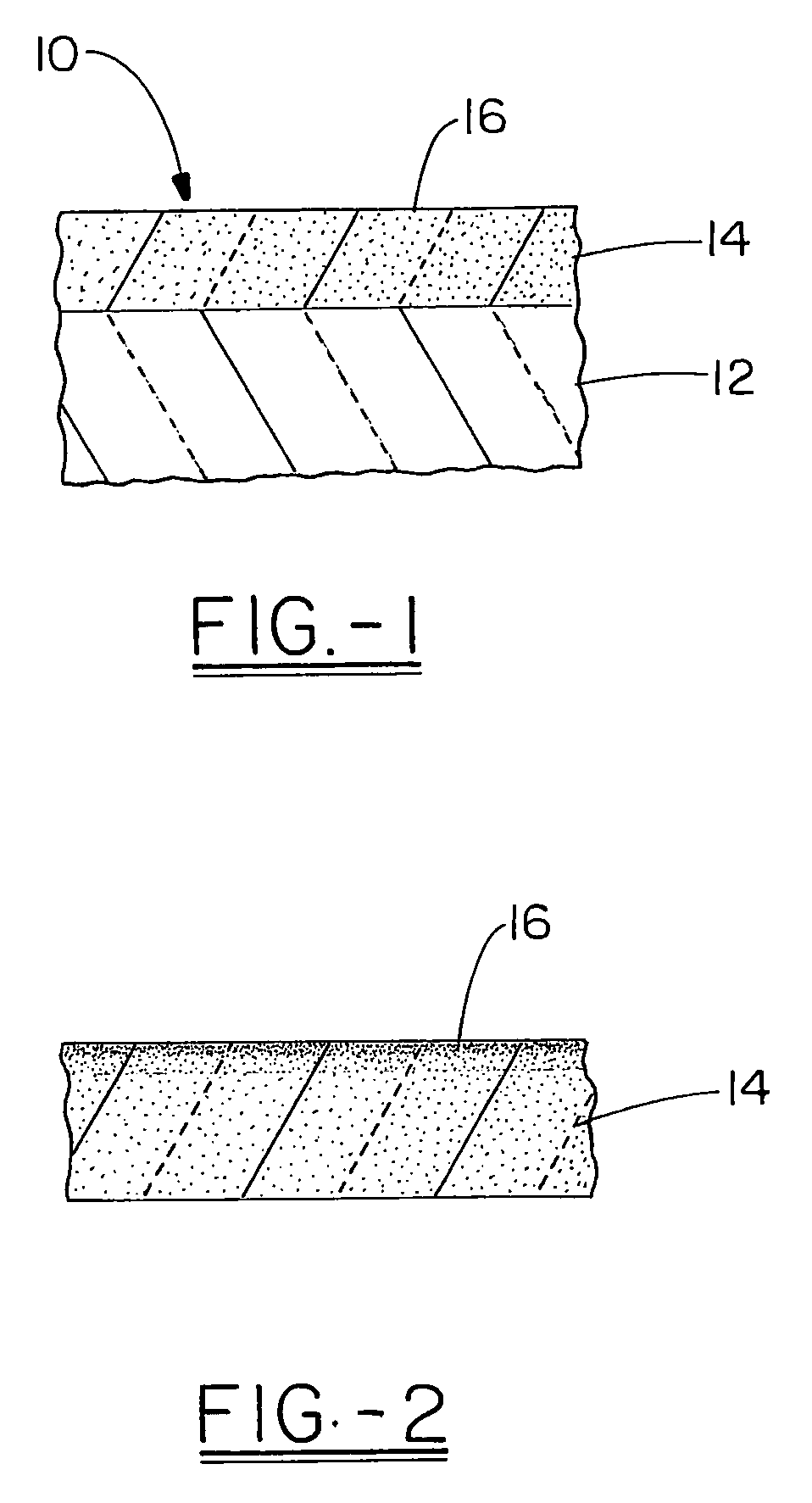Fog and abrasion resistant hardcoat for plastics having hydrophilic surfactant rich surface portion with surfactant concentration gradient
a technology of surfactant concentration and hardcoat, which is applied in the field of friction and abrasion resistance hardcoat for plastics having hydrophilic surfactant rich surface portion with surfactant concentration gradient, can solve the problems of physical defects in the coating after curing, and the coating does not provide an anti-fog surface, etc., and achieves the effect of easy washes
- Summary
- Abstract
- Description
- Claims
- Application Information
AI Technical Summary
Benefits of technology
Problems solved by technology
Method used
Image
Examples
example 1
[0039]147 g of Nalco 1034A silica was placed in a 500 mL round bottomed flask with 12.4 g methacryloxypropyltrimethoxysilane and 7.4 g vinyltrimethoxysilane crosslinking agents, 196 g isopropanol solvent and a magnetic stirrer. The crosslinking agents were grafted onto the silica by heating the mixture to 70° C. for 3 hours, then cooling to 50° C. 163 g Sartomer CN132, an aliphatic oligomer 17.8 g Sartomer CN981, a urethane acrylate oligomer, and 350 g Sartomer SR272, triethyleneglycol diacrylate monomer, were added and stirred for 30 minutes. The flask was placed on a rotary evaporator and the water / IPA mixture removed under reduced pressure. 50 g benzophenone photoinitiator was then dissolved in 350 g of SR272 and the solution added to the formulation in the flask.
example 2
Control
[0040]The polymer coating formulation of Example 1 was spread on cleaned polycarbonate sheet using a #12 wire-wound rod (RDS Specialities, Webster, N.Y.) and fully cured in 8 passes on a Fusion LC6B with an F300S curing system (H bulb, 300 W / inch) at 56 fpm belt speed (Fusion UV Systems, Inc., Gaithersburg, Md.).
example 3
Control
[0041]To 99.9 g of the polymer coating formulation of Example 1 was added and mixed 0.1 g Pluronic L62 surfactant, a triblock copolymer of (polyethylene oxide)(polypropylene oxide)(polyethylene oxide) with an approximate molecular weight of 2,500 manufactured by BASF. The coating formulation was then coated and fully cured on a polycarbonate substrate and fully cured as set forth in Example 2 (8 passes).
PUM
| Property | Measurement | Unit |
|---|---|---|
| thickness | aaaaa | aaaaa |
| thickness | aaaaa | aaaaa |
| thickness | aaaaa | aaaaa |
Abstract
Description
Claims
Application Information
 Login to View More
Login to View More - R&D
- Intellectual Property
- Life Sciences
- Materials
- Tech Scout
- Unparalleled Data Quality
- Higher Quality Content
- 60% Fewer Hallucinations
Browse by: Latest US Patents, China's latest patents, Technical Efficacy Thesaurus, Application Domain, Technology Topic, Popular Technical Reports.
© 2025 PatSnap. All rights reserved.Legal|Privacy policy|Modern Slavery Act Transparency Statement|Sitemap|About US| Contact US: help@patsnap.com


